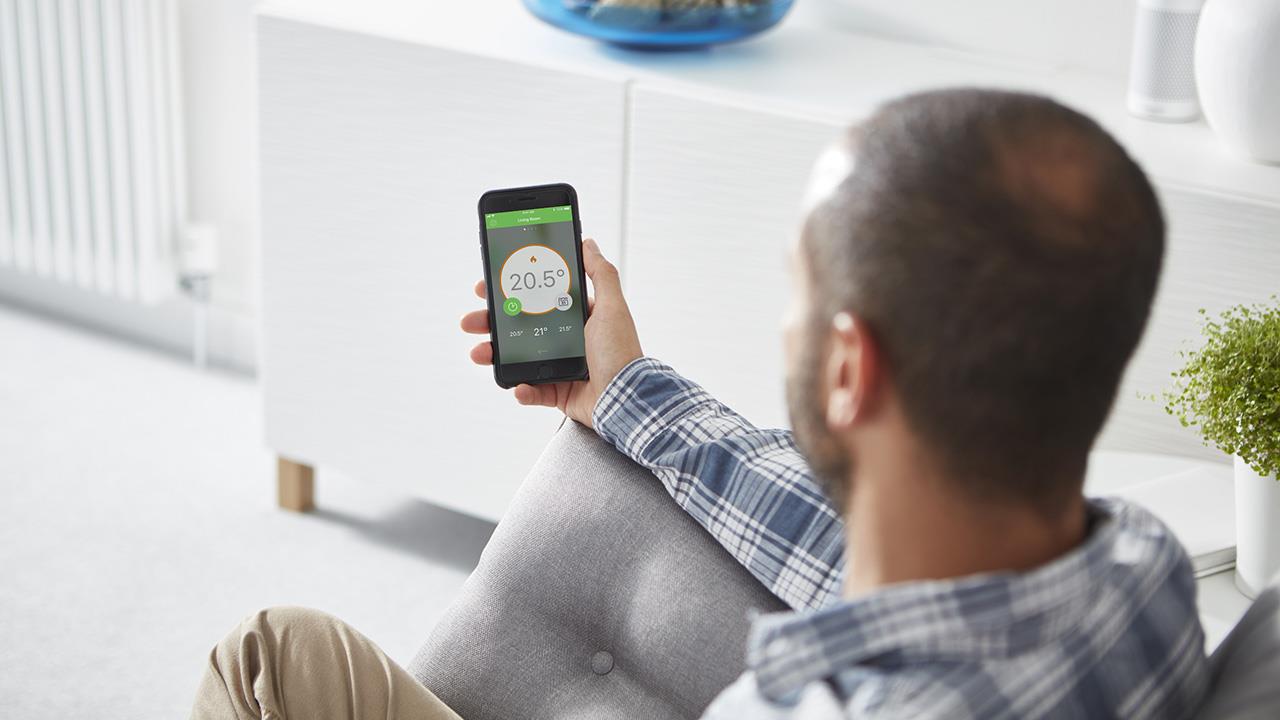

When it comes to heating controls, there is a big difference between smart and connected. Natalie Wathan, Product Manager at Drayton, explains why smart controls should be considered as part of a connected system.
When it comes to fitting heating controls, it’s safe to say that customers are now looking to get the most of out of the device installed, which is why we have seen a rise in demand for smart and connected controls. As such, it is important for installers to understand the different between a ‘smart’ and ‘connected’ control and the benefits that each offer, as well as how this technology will withstand the country’s move to carbon neutral heating solutions.
What’s the difference?
Connected devices have been around for quite some time but have expanded into the heating sector over the past decade. However, in today’s market, the terms ‘smart’ and ‘connected’ are often used interchangeably, driving a common misconception that these are the same type of heating control, when in fact they both offer different functionalities.
A connected device quite simply is one that can be connected to the internet to transfer data and offers users the ability to control their heating from a mobile device. This can often lead to confusion about whether a control is ‘connected’ or ‘smart’, as in most instances they both include this function as a key feature. The ability to remotely control your heating has a large appeal for many homeowners, benefitting those with unpredictable schedules by allowing them to adjust their heating schedule on the go and ensure they do not waste energy heating an empty house.
Many connected controls will also be able to integrate with smart assistants such as Amazon Alexa or the Google Assistant, which is increasingly becoming a key requirement for many customers. This is supported by research from Drayton, which found that 50% of respondents already had at least one other smart device in the home before investing in Wiser.
However, the main difference between ‘smart’ and ‘connected’ is the technology found in the device. For a heating control to be truly smart, it should have some element of self-learning technology within it that helps to improve the performance of the heating system without needing any interaction from the user. Many heating controls feature intuitive technology that make them smart, for Wiser this is found in its smart modes; Eco Mode, Comfort Mode, and Away Mode.
When Eco Mode is activated, Wiser uses ‘optimum stop’ and weather compensation to save energy, by understanding the thermal profile of a home and how well it retains heat. Additionally, Comfort Mode in Wiser will use optimum start to ensure the scheduled temperature is achieved by the ‘on time’.
Using geofencing technology via platforms such as IFTTT (If This Then That), homeowners can also create rules to control the heating based on their proximity to the home. For example, a rule could be set in conjunction with an app such as Life360, to automatically activate Wiser’s Away Mode when the last family member leaves the home.
How can smart controls help?
As with every part of the heating system, understanding the needs of your customer is key to recommending the right products.
Smart controls can be a powerful tool when it comes to reducing energy use, all while improving comfort and convenience. So, while it is true that smart controls can be more expensive upfront, in the long run the huge energy savings that they can often deliver makes them ideal for families looking to keep their energy bills down.
A recent study by Reichelt Elektronic showed that 46% of UK adults who currently use smart home heating solutions have reduced their heating bills and 47% have improved their comfort at home.
When working on a job for homeowners who want to do their bit when it comes to climate change and CO2 reduction, heating engineers should consider the additional benefits that smart heating controls can offer when installing a connected system.
If you'd like to keep up-to-date with the latest developments in the heating and plumbing industry, why not subscribe to our weekly newsletters? Just click the button below and you can ensure all the latest industry news and new product information lands in your inbox every week.